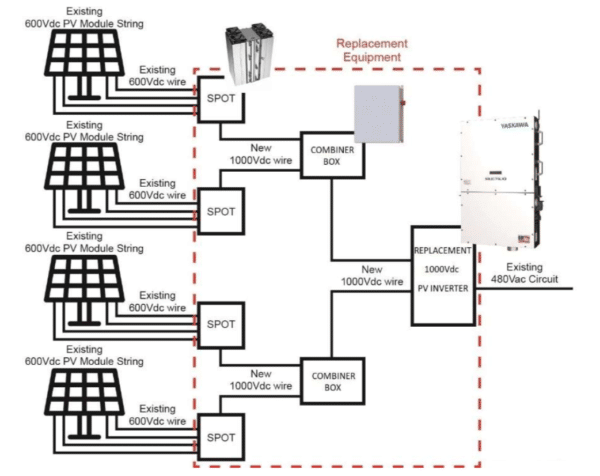Things fail with age, whether they be cars, phones or inverters. Alencon, an optimizer manufacturing company out of Hatboro, Pennsylvania has published a white paper looking at the failure rate of central inverters used in aging 600-volt PV plants.
The inverters in question are five to ten years in age and are beginning to fail, not in isolated cases here and there, but with “a high degree of regularity,” according to the study.
Inverter failure is not the issue, as many project owners reserved cash during project development, anticipating significant repairs down the line, inverters included. The process has been complicated by factors tied to the relative youth of the solar industry during these projects’ planning and construction.
Most paramount, the 600-volt inverter is not nearly as popular of a technology as it was five to ten years ago and the majority of today’s major manufacturers no longer make them. Additionally, many companies that were leading manufacturers at the time do not exist anymore, meaning that direct hardware replacements are now impossible.
In replacement, string inverters are the logical choice, providing a similar power rating, but these lack the isolation transformers present in central inverters.
The sum of these factors leads to two hurdles in replacing old 600-volt central inverters: voltage mismatches between old PV strings and new inverters and grounding mismatches between old PV technology and the now transformerless string inverters.
Not only do older PV components fail to generate enough voltage to turn on and maintain the operation of the 1000-volt or 1500-volt replacement candidates, but many of the projects require grounding. Again, innovation creating obsolescence, as string inverters these days are ungrounded or “floating.” These floating inverters can form the 480-volt output needed to interact with the grid without the need of a grounded isolating transformer that older projects accounted for and required.
With these challenges in mind, Alencon developed two potential solutions that incorporate the use of the company’s String Power Optimizer and Transmitter (SPOT), a piece of hardware that uses galvanic isolation technology to optimize the existing technology to new inverters. SPOT uses an internal, high frequency isolation transformer to converter power from DC to AC, back to DC. In a sense, SPOT takes the place of the isolating transformer and maps the voltage differential between the 600-volt PV panels and the 1000/1500-volt inverter.
The paper offers one solution for SPOT installation between the existing PV strings and combiner boxes and one for installing SPOTs after the combiner box.

According to the paper, installing SPOT between the combiner box and the existing PV panels solves the aforementioned voltage mismatch and grounding challenges while also allowing for string-level maximum power point tracking (MPPT). The downside to this solution is that, in some applications, it would require significant field rewiring.

Installing SPOT behind after the combiner box trades string level MPPT for array-level MPPT, which the company claims leads to faster installations and lower balance of system costs. This is the solution that Alencon sees as particularly advantageous for aging residential installations, where PV is installed on the roof and the inverters are on the ground.
This content is protected by copyright and may not be reused. If you want to cooperate with us and would like to reuse some of our content, please contact: editors@pv-magazine.com.









Thanks for the info
A source and approximate costs would be very helpful.